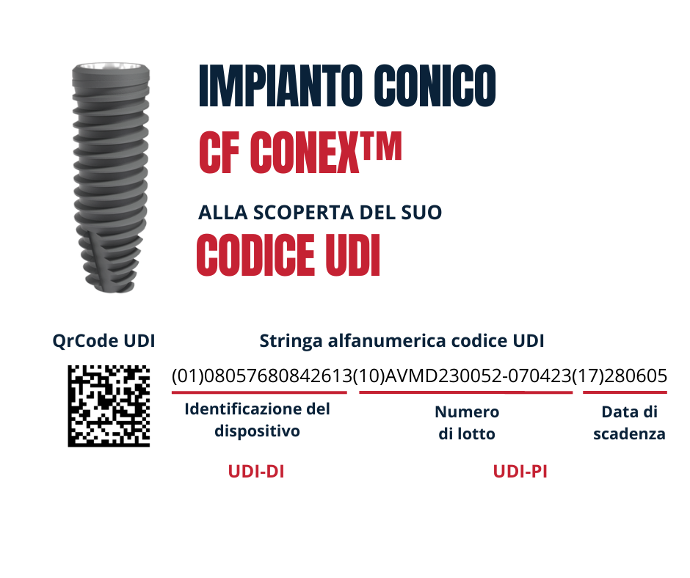Di recente il tema ha assunto un’importanza notevole, in particolar modo per l’obbligo di registrazione dei dispositivi medici di classe IIb impiantabile e III imposto da gennaio 2024. Ma di cosa realmente si tratta quando si parla di codice UDI?
UDI code: what is it?
The unique identification code is a unique numeric or alphanumeric code that is associated by the manufacturer to the individual medical device. Each UDI code identifies and tracks one and only one medical device in order to implement the European medical device identification and tracking system.
The advantages that the new system is aiming at are precisely:
The advantages that the new system is aiming at are precisely:
- simplification of traceability of medical devices;
- better identification of medical devices;
- increased efficiency of activities related to post-market security of devices;
- reducing medical errors and combating device counterfeiting.
How is the UDI code composed?
Let us now turn to more practical matters and analyse the structure of the code.
Each UDI code consists of two parts:
To date, regulations require the UDI code to be printed on the label of each device, either in human readable format (the famous alphanumeric string visible in the image below) or in PC or scanner readable format such as BarCode or QrCode
MDR. This indication is also called the UDI Vector: for reasons of space the MDR only allows the PC-readable version on the label.
Each UDI code consists of two parts:
- the first called UDI-DI, specific to each medical device model;
- the second one called UDI-PI which indicates the variable information of that specific device such as batch, serial number, expiry date, etc.
To date, regulations require the UDI code to be printed on the label of each device, either in human readable format (the famous alphanumeric string visible in the image below) or in PC or scanner readable format such as BarCode or QrCode
MDR. This indication is also called the UDI Vector: for reasons of space the MDR only allows the PC-readable version on the label.

The UDI code registration requirement
As previously mentioned, as of January 2024, to avoid incurring heavy administrative penalties, all dentists are obliged to electronically register and retain the UDI code for at least 15 years.
But, since we are still within the transitional period provided for by EU Regulation 2017/745, what should we do with devices without UDI?periodo transitorio previsto dal regolamento UE 2017/745, come comportarsi in caso di dispositivi senza UDI?Currently, the law allows the previous traceability systems to be maintained, i.e. the registration of the batch number and CE marking in both the patient's medical record and the implant passport.
As for MDR-compliant devices, we leave you with some useful pointers on the correct registration of the UDI code.
Some Excel registers or management programmes require separate registration of UDI-DI and UDI-PI. In this case, you can help yourself with AIs, i.e. specific reading indicators that in the human readable code are indicated within brackets:
But, since we are still within the transitional period provided for by EU Regulation 2017/745, what should we do with devices without UDI?periodo transitorio previsto dal regolamento UE 2017/745, come comportarsi in caso di dispositivi senza UDI?Currently, the law allows the previous traceability systems to be maintained, i.e. the registration of the batch number and CE marking in both the patient's medical record and the implant passport.
As for MDR-compliant devices, we leave you with some useful pointers on the correct registration of the UDI code.
Some Excel registers or management programmes require separate registration of UDI-DI and UDI-PI. In this case, you can help yourself with AIs, i.e. specific reading indicators that in the human readable code are indicated within brackets:
- the 14 digits that are written after the indicator (01) correspond to the UDI-DI code;
- from the next indicator onwards, which may be, for example, (10) or (17), this is the UDI-PI code.
Conclusion
The introduction of the UDI code represents a major step forward for the traceability and safety of medical devices, ensuring a more efficient and reliable system to protect the patient.
To stay informed on these and other issues, keep following BioService's ‘Quality Matters’ section: every month you will find interesting insights to keep up with evolving regulations and industry updates.
To stay informed on these and other issues, keep following BioService's ‘Quality Matters’ section: every month you will find interesting insights to keep up with evolving regulations and industry updates.

